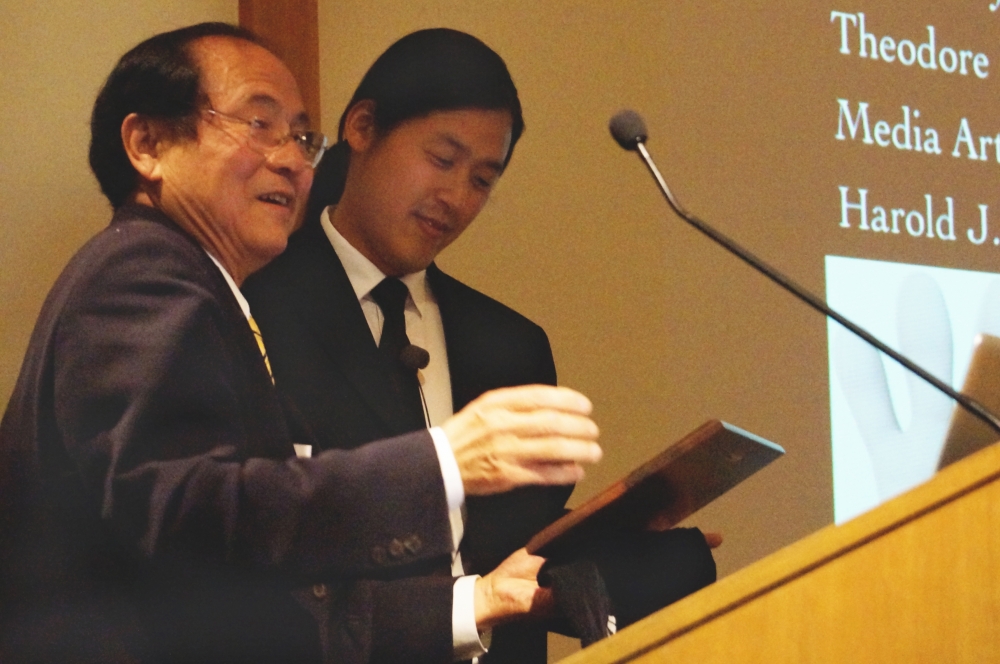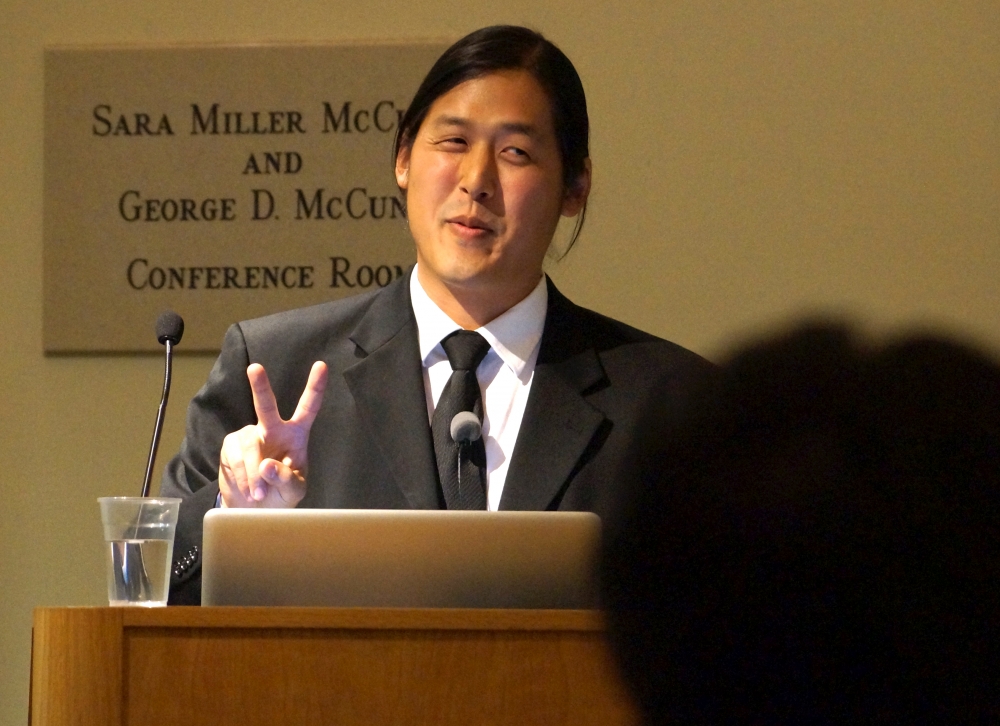The 'Seductive Promise' of CGI



Independent films dominated the 2014 Academy Awards, taking top honors in the marquee categories for acting, screenplay and best movie of the year.
But the so-called “crafts categories,” including the prize for best visual effects, were dominated by a singular blockbuster: the stunning thriller “Gravity.” When it came to nominations for achievement in what’s commonly known as VFX, the indies were out of the picture.
That’s both unsurprising and unlikely to change anytime soon, according to UC Santa Barbara computer scientist Theodore Kim, who happens to be an Oscar winner himself.
Delivering UCSB’s annual Plous Lecture on Monday, the assistant professor of media arts and technology — recipient of a 2013 Academy Award in Technical Achievement — took on the evolution of effects and the disparity inherent in an industry where big budgets get the best results.
Case in point: “Gravity,” which had a production budget of $100 million and a special effects crew of more than 650 people. Kim also cited the example of the 2011 release “Super 8,” a movie about kids making a movie using the now-primitive technology for which the feature is named.
“Whatever is the opposite of teenagers in a backyard, running around with a Super 8 camera, it’s probably 650 extremely talented, highly trained professionals, working for over a year — that’s about a century of man hours — on a movie,” said Kim, whose Oscar-winning algorithm for smoke and fire effects was used in “Super 8” and more than two dozen other films since. “This paradox raises some questions.”
The advent of digital in filmmaking — and of computer-generated imagery (CGI), specifically — created “a very seductive promise,” Kim argued, that “all you need is a device, a computer … and you can make whatever film the heart desires.”
But despite continual advances in technology, VFX tools remain extremely expensive and difficult to use. With so few filmmakers able to access the resources required for top-shelf effects (think Spielberg, Cameron, Jackson), that promise, Kim said, is unfulfilled. And aspiring indie auteurs — perhaps the future Tarantinos and Scorseses of the world — are as yet out of luck.
“You do need a computer, but you also need the scientists who developed the algorithms on tap, too,” Kim argued. “You need access to an army of artists, and to compute the final images you need a supercomputer. It wasn’t really ever the case that we were on the road to being able to make movies with just a laptop.”
With that reality in mind, what’s next for the industry that gave us “Gravity,” putting moviegoers aboard a burning International Space Station in the midst of an asteroid storm?
The next frontier for CGI — and not that far into the future — is the virtual human, said Kim, predicting that effective techniques will make their way to movie studios in the next 10 to 15 years.
He and his research team may have a hand in getting them there.
Actively engaged in the topic already, Kim’s group is publishing a paper looking at simulations driven by bones. Their new method enables a virtual hand to run in real time, about 6 frames per second. One of his grad students (and the paper’s lead author) will spend her summer at Pixar, which has a keen interest in the technology.
And therein lies a key theme interwoven through Kim’s talk: academia is very often the birthplace and the driver of the innovations that are revolutionizing filmmaking. Offering highlights of his own efforts to bend the “rules” of physics simulation and produce complex shapes and dynamics “unlike anything we’ve seen before,” he theorized that the next major advancement in effects would likely originate in the research lab.
“Can CGI still show us something we’ve never seen before?” Kim asked “From a studio perspective: virtual humans. But outside the studio system there is quite a bit that has not been explored at all. And they’re things that won’t happen inside the studio system. They will happen through independent filmmakers, or most likely at universities. In the media arts and technology program here, these are exactly the types of things we’re trying do.”



